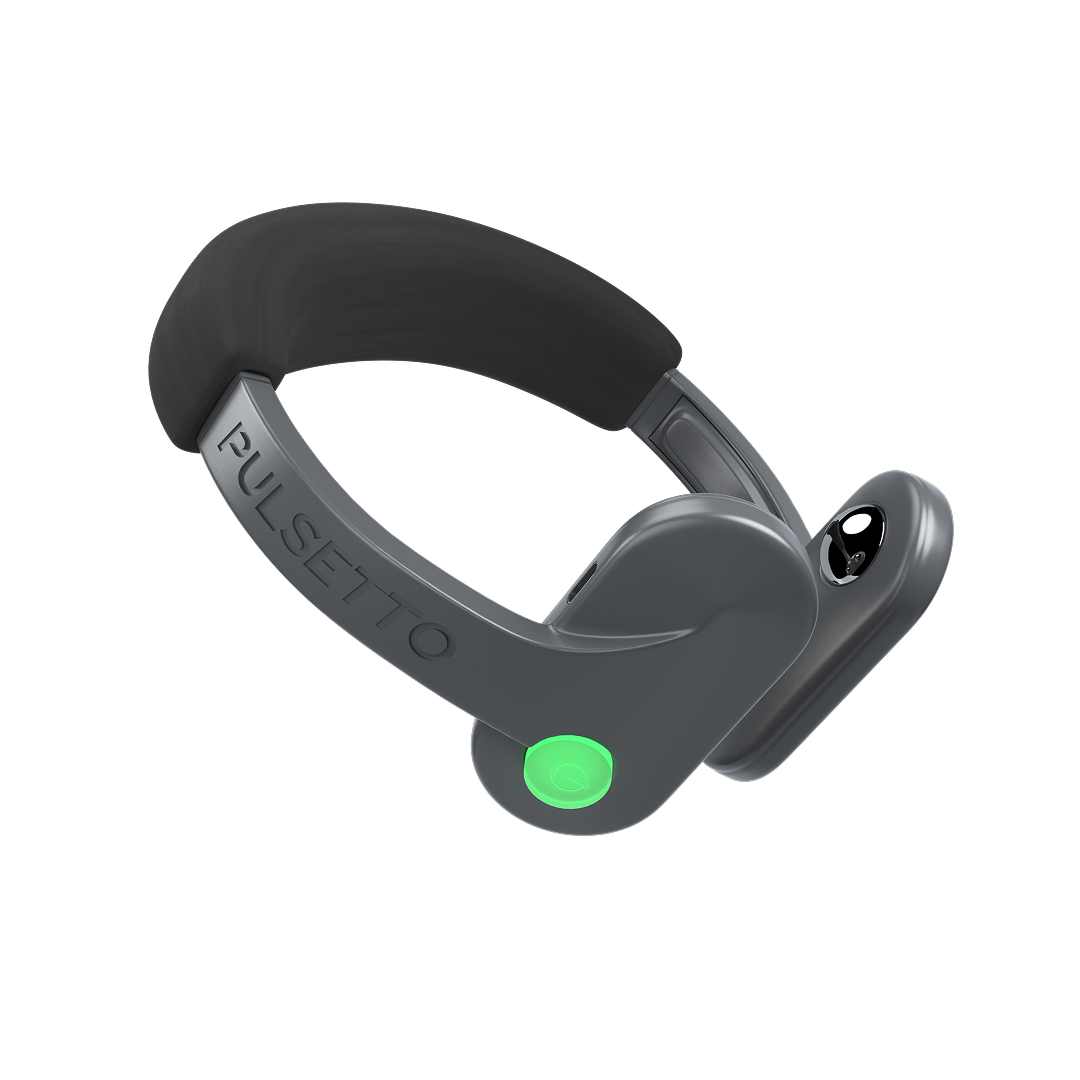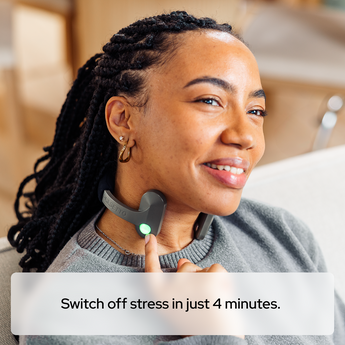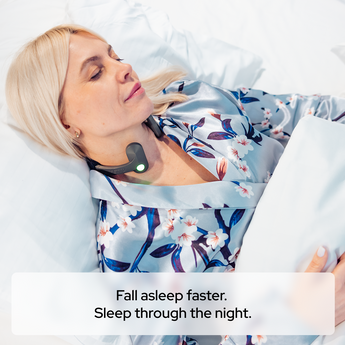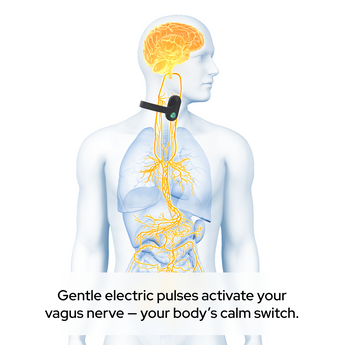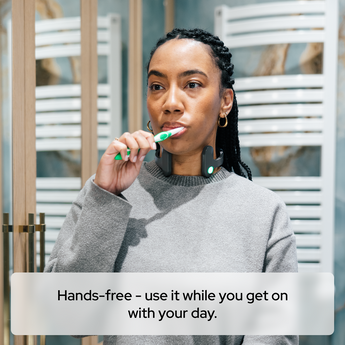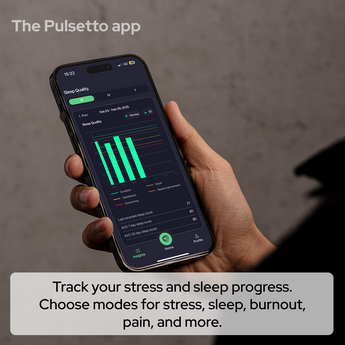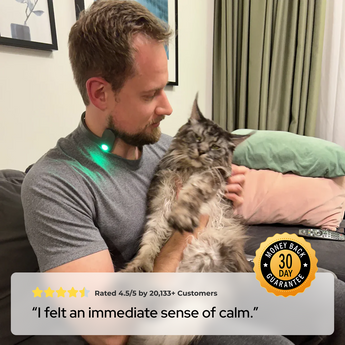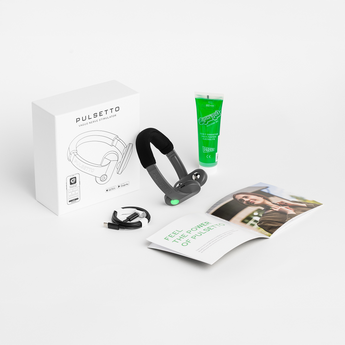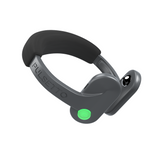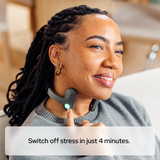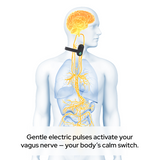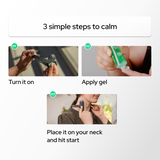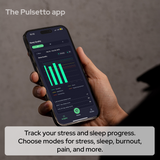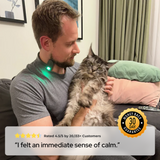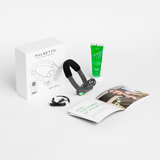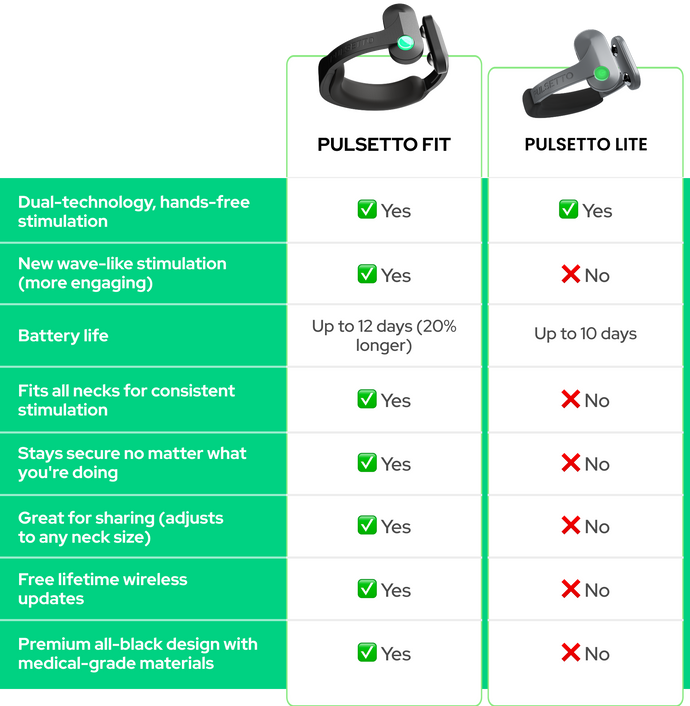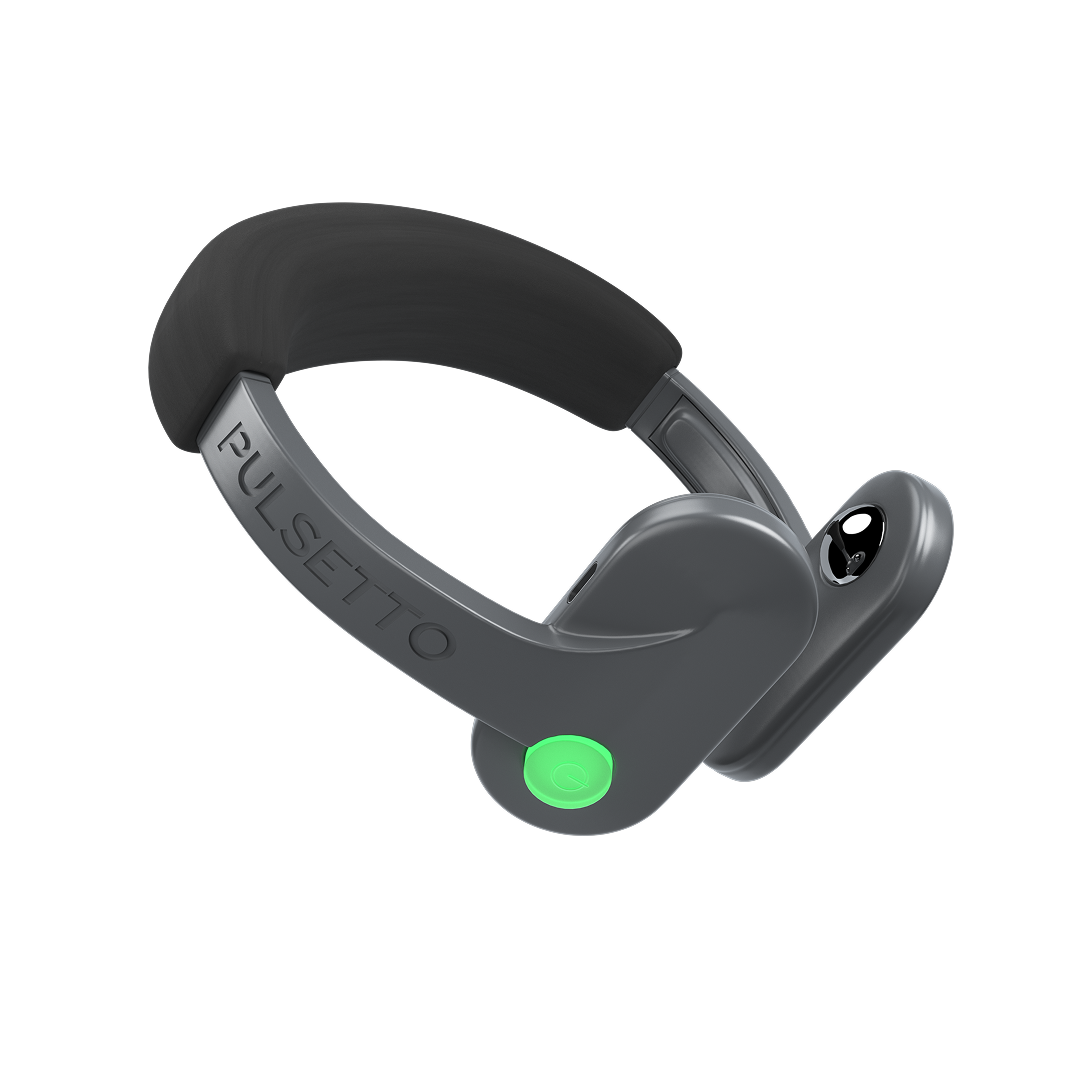|
#
|
Tool
|
Type
|
Description
|
|
2
|
Sensate 2
|
Acoustic resonance (chest) + app
|
Sensate is a pebble-like device you place on your chest; it pairs low-frequency vibrations (felt through bone conduction) with calming soundscapes in the app. The goal is to soothe the autonomic nervous system and make it easier to settle into meditation, particularly if you’re coming in “hot” from a stressful day. The tactile element is the hook: many people find it easier to anchor attention to a physical vibration than to breath or a mantra alone. Sessions are quick (often 10 minutes), so it fits micro-meditations between meetings or as a wind-down before bed. Compared with typical audio-only apps, Sensate’s resonance can feel more immersive and body-based, useful if you respond well to somatic cues. Its ecosystem includes a library of tracks and bundles, and the hardware is fully portable, so you can practice anywhere. As always, effects are individual, but if you’ve struggled to quiet your mind with purely cognitive techniques, Sensate’s bottom-up, body-first approach is worth testing. It’s especially nice for guided “downshift” sessions before a longer sit.
|
|
3
|
Muse S / Muse S Athena
|
EEG headband + biofeedback app
|
Muse popularized real-time meditation biofeedback: you wear the headband, sit, and the app translates your brain activity into sound, calmer brainwaves bring gentler soundscapes, “birds” mark moments of stability. This immediate feedback helps beginners learn what “settled” actually feels like and gives experienced practitioners a way to quantify progress over time. The newer Muse S lineup focuses on both meditation and sleep; the premium “Athena” variant adds fNIRS alongside EEG to track brain blood flow and cognitive effort, and includes sleep features like “Digital Sleeping Pills.” That dual emphasis, daytime mindfulness, nighttime recovery, makes Muse a versatile tool for a 24-hour nervous-system routine. If you like data and coaching, Muse’s post-session metrics are motivating, and the hardware is comfortable enough for extended wear. The trade-off is that EEG devices require fit and sensor contact to be just right; sessions can be disrupted if positioning is off. Still, among feedback-driven meditation trainers, Muse remains the category benchmark and continues to innovate in 2025 with richer sensors and expanded content.
|
|
4
|
Apollo Neuro
|
Haptic wearable + app (vibes)
|
Apollo Neuro sits on your wrist or ankle and delivers patterned, barely-perceptible vibrations (“vibes”) that aim to support desired states, calm, focus, social, sleep, etc. It’s not a meditation coach per se, but it’s a powerful pre-meditation primer and a background aid during sits. Many users run “Calm” or “Meditation & Mindfulness” vibes to reduce restlessness and get into practice more quickly, and then switch to “Sleep” at night. The company emphasizes research around HRV and state regulation, and in 2025 has leaned into SmartVibes and session features to tailor timing and patterns. For those who find it hard to transition from work to stillness, the gentle rhythmic haptics can bridge the gap without audio. Apollo layers well with other tools: wear it while using a breath app, during body scans, or under a traditional silent sit. Downsides: like any wearable, comfort and adherence matter; some people notice it more than others. But as a “state-shaping” companion for meditation and daily regulation, it’s one of the most versatile options.
|
|
5
|
Core by Hyperice
|
Handheld meditation trainer + HR sensors
|
Core is a palm-sized meditation trainer that uses gentle vibrations to guide breath and attention while measuring physiological signals (heart rate variability, etc.) through built-in sensors. You hold it during a session, follow the vibration prompts, and listen to guided meditations in the app. That tactile cue keeps wandering minds engaged, very helpful for beginners or for quick regulation between meetings. Core also doubles as a visual reminder on your desk: pick it up, run a 3–10 minute protocol, and reset. Now part of Hyperice’s recovery ecosystem, Core benefits from a broader wellness platform without losing its meditation focus. Compared with headbands, setup is simpler; compared with audio-only apps, the haptics provide a second anchor. If you like a “fidget-friendly” object that keeps hands busy and attention steady, Core can become your go-to. It’s particularly useful for corporate wellness or anyone building a twice-daily regulation habit. Note: availability may vary by region, and some users will prefer wearables that run passively.
|
|
6
|
BrainTap (app + optional headset)
|
Audio-guided brain entrainment
|
BrainTap pairs an extensive session library with an optional headset that emphasizes immersive audio for relaxation, focus, and sleep. For meditation, the value is structured, goal-based programs, stress relief, resilience, and mindset, so you don’t have to curate your own path through hundreds of tracks. The ecosystem is deep (2,000+ sessions), and the headset aims to reduce external distractions so you can drop in faster. If you’re motivated by programs and progress, you’ll appreciate the breadth of content and the “press play and relax” simplicity. While purists may prefer silent or breath-only practices, many busy professionals find that guided, multi-sensory sessions reduce friction and increase adherence, especially in the first 30–60 days of building a meditation habit. As always with audio-based tools, experiment with volume and session length to avoid over-stimulation and to discover what best supports your baseline practice. For content depth and hardware synergy, BrainTap is a mature option in 2025.
|
|
7
|
Calm (including the new Calm Sleep app)
|
Meditation & sleep apps
|
Calm remains a mainstream entry point for meditation with polished courses, daily meditations, and Sleep Stories. In September 2025, Calm launched Calm Sleep, a stand-alone iOS app centered on improving sleep with habit loops and a “sleep readiness” bar that integrates with Apple Health. For meditators, that means tighter coupling between daytime mindfulness, evening wind-downs, and measurable sleep behaviors, useful if your primary goal is restorative sleep and you want clear guidance (and accountability) from wake to bedtime. Calm’s production quality stays top-tier, and its library is huge; add in the new sleep-specific app, and you’ve got an end-to-end toolkit for relaxation. If you prefer a single brand for meditation plus nightly routines, Calm’s ecosystem now covers both. As with any subscription, sample the trial, test a few series, and ensure the coaching style resonates; content tone matters as much as features.
|
|
8
|
Headspace
|
Meditation app + coaching
|
Headspace is still one of the most beginner-friendly ways to learn meditation, with approachable animations, step-by-step courses, and short sessions that fit busy schedules. Over the years, it has expanded beyond basic mindfulness to include focus, movement, and sleep support, and it now offers options like mental health coaching in certain plans. If you want “training wheels” and a clear curriculum that builds skills week by week, Headspace is hard to beat. Live community meditations and themed packs make it easy to keep momentum without decision fatigue. The trade-off is subscription cost and the risk of hopping between too many tracks; the fix is to pick one course, commit for 10–20 minutes daily, and reassess after a month. For teams or families, shared challenges can help adherence. In short: an excellent on-ramp and a reliable long-term companion for structured, secular mindfulness practice, great alongside a wearable or on its own.
|
|
9
|
Insight Timer
|
Free meditation app + timer
|
Insight Timer offers the largest free library of guided meditations (hundreds of thousands of tracks) plus a beloved interval timer for silent sits. For cost-conscious users or explorers who like sampling different teachers and styles (MBSR, Vedic, Zen, yoga nidra), it’s unmatched. New tracks are added daily, and you can build playlists, join courses, or simply use the clean timer with bells. In 2025, community chatter highlights both praise for recent updates and some criticism about clutter in parts of the UI, so it’s worth personal testing to see how the experience feels to you. The key benefit is sheer variety and zero barrier to entry: you can start a 10-minute body scan now without paying or committing to a program. If your motivation comes and goes, Insight Timer’s “open buffet” can keep practice fresh; if you prefer a tight curriculum, pair it with a specific course or coach.
|
|
10
|
Morphée / Morphée Zen
|
Screen-free meditation & sleep devices
|
Morphée stands out because it’s totally screen-free: a tidy wooden (or pebble-style) device with physical dials that select session type, theme, and duration, no notifications, no internet. The library includes 200+ guided meditations, body scans, breathing, nature sounds, and music, available in multiple languages. For people who want to unwind without a phone, and who find that screens sabotage pre-sleep rituals, Morphée is a refreshing alternative. The Zen version is ultra-portable for quick 5-minute “calm breaks.” It won’t give you biofeedback or app analytics; the appeal is simplicity and a reliably soothing catalog you can use in airplane mode forever. Many sleep-focused users pair Morphée with a separate mindfulness routine during the day; others keep it as their primary evening wind-down tool on the nightstand. If your meditation goal is less dopamine and more deep rest, a screenless box with a curated library can be exactly the friction-free nudge you need.
|



